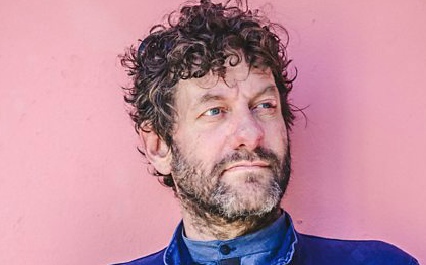Adam Somerset listens in as poet Twm Morys takes a sonorous journey into a world of sound-harmony and chiming consonants, to explore the ancient craft of Cynghanedd, in BBC Radio 4’s To Rhyme and Chime for a Chair.
The suave voice of the announcer, not surprisingly, has a little difficulty with the pronunciation. The first-syllable stress pattern of English renders it as “kang-han-eth”. The softer tones of Twm Morys take over for the programme itself. He gets the “ng” in the word and gives it a correct, less drumbeat rhythm. The BBC’s written description for the programme is “Welsh poet Twm Morys takes a sonorous journey into a world of sound-harmony to explore the ancient craft of Cynghanedd.” It is a good encapsulation, the notion of harmony being stressed by Morys’ first interviewee.
Mererid Hopwood does not care for the definition “ancient Welsh strict metre”, finding it “ugly and cumbersome.” A dictionary gives simply “harmony”. Hopwood describes how it works; in a line of cynghanedd the words in terms of meaning move in one direction. But each word plays back against another word, or other words, within the line. The result is an enhanced density of sound.
The practice over centuries has developed a set of rules. Dylan Foster-Evans from Cardiff University adds more detail. There are four types with variously repeating consonants, internal rhyme, and some with both. Hopwood provides the examples, a matched stress of the vowel “ach” in the lusg category. The draws variation matches the consonants of the first part of a line with those at the end of a line. The groes type matches everything. Sain splits the line in three: parts one and two rhyme, parts two and three match the consonants. Morys interpolates with surprising illustrations from English.“Think before you drink before you drive” is in the form of cynghanedd sain. So too is “make fish the dish of your day.”
With the definitions done the programme moves to the historical context. The form has examples dating from the sixth century. The intricate patterning was common in other poetic traditions but only in Wales is it unbroken. Foster-Evans puts its current forms as crystallising in the fourteenth century While the indigenous laws of Hywel Dda were progressively integrated and eventually done away with, the poetic laws stood strong.
The programme moves to the reading of verse. Morys finds William Barnes adopting the form in English: “Lean down low in Linden Lea,” he reads. It appears in Gerald Manley Hopkins, the first line of the Windhover: “I caught this morning morning’s minion, kingdom of daylight’s dauphin.” Morys identifies it in the last line of Fern Hill: “Though I sang in my chains like the sea.” Dylan Thomas’ own inimitable voice in recital is heard. Thomas’ translator into Welsh, T James Jones, points to the first line of Under Milk Wood. The examples from Thomas are many. “Do not go gentle into that good night” is an example of cynghanedd draws.
Morys’ interviews move to the wider context. Ceri Wyn Jones places the making of verse in the current context, its annual culmination at the National Eisteddfod. Eurig Salisbury learned the craft at age thirteen. Classes in cynghanedd are thriving with a society and magazine. Mererid Hopwood looks at other languages. The nature of stresses make it hard in English while Spanish is kinder. She cites Goethe’s “fliesse, fliesse, liebe Fluss”.
The programme rounds off with a visit to a scholar in Bangor, Guillaume Thierry. Surprisingly to Morys he is in the psychology department. The brains of Thierry’s subjects are monitored for variations in response to sentences that follow or do not follow the cynghanedd rules.
Twm Morys’ voice is relaxed and engaging. The editing of To Rhyme and Chime for a Chair is both tight but unrushed. The programme illuminates a poetic form central to the culture. Its coverage comprises the local with the global – to see the effect on the listener look just to that last set of eight words.
To Rhyme and Chime for a Chair is available now on the BBC iPlayer.
Adam Somerset is an essayist and a regular contributor to Wales Arts Review.











